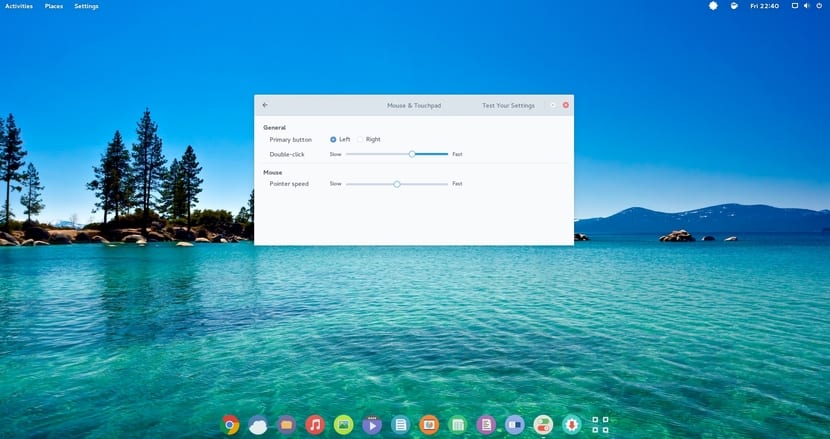
Apricity OS is a nice clean Linux distribution that you will surely like. Although the image above is from the distro with the GNONME desktop environment, it is also available in other editions such as the one that comes with the Cinnamon environment, if you like the latter more, although the truth is that the appearance of the first one is quite elegant, resembling that of Apple's Mac OS X.
As you know, there are hundreds of Linux distributionsWe usually know the best known, Ubuntu, openSUSE, Arch Linux, Linux Mint, Debian, etc., but there is a whole world to discover and some of them, although less known, are no less interesting. It is the case of this distro that looks very good. At least it seems to me that it is visually attractive and very pure if we dig a little deeper.
Apricity OS may perhaps assume the rival at the height of Antergos (the Galician distro) needed. Apricity OS is also based on Arch Linux, although it has its own tweaks that its developers wanted to integrate to make it more genuine. In addition, Apricity OS has its own repository with sensitive packages. Its visual aspect is due to its own Artwork based on Arc-Theme and called Artic Apricity to give it its own identity.
Apricity OS has an advantage over Antergos, and yes you download its ISO, it brings an offline installation system, something that is appreciated when you do not have an Internet connection or if your band is slow. For the installations you will have the Calamares installer, quite well known and at the moment it is only available in 64-bits, although this is not a serious problem and provides all kinds of facilities so that enjoying the essence of Arch Linux is not so arduous for starters…
Just a note for the errata: The Galician distro is not «antegros», it is «antergos» (in Galician it means «ancestors»).
Hello, thank you very much for advising.
A typo that I have not taken into account. I fix it ...
A greeting!
Visually the distribution is impeccable, maybe I will try it since I need a new distribution for my old computer, it is likely that I will try that or Elementary OS.
So much distribution bothers me, it sounds silly but it is true, I mean that I am sad to see how Linux disintegrates with each distribution, I myself have ideas to add to Linux that I think would improve certain aspects, but in the end there is a fork for each idea and that is not good either… .. That no one skip me with the plurality and that each distribution is for a different thing, I know that.
because they are not limited to redesigning environments and contributing to the mother distro, since this is simply a retouched dirstro and they change the name. As such, although everyone can do what they want and publish if it is what they want, the recommendation will always be to take a mother distro and modify to taste.
The distro that etsba very good was Fuduntu, how I miss that OS :(
The truth is that it also bothers me a bit to see wasting energy in so many new distros that, many times, they quickly run out of support and disappear. Although I must admit that the one that best adapts to the needs of users survives, and on the one hand that is also good, evolution based on diversity. Ubuntu was once one of the many OSs that come out and, although it is true with a bit of luck as well, with the passage of time it consolidated and became the «most used contemporary Linux».